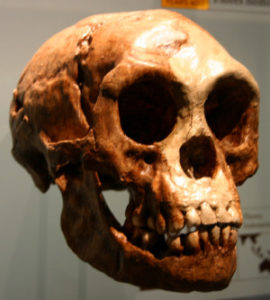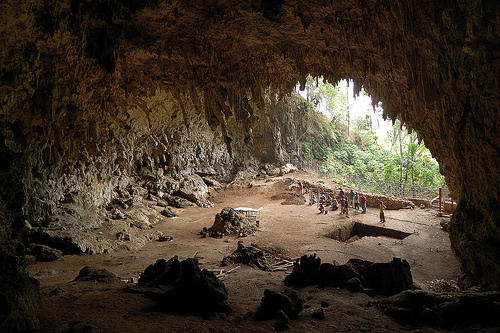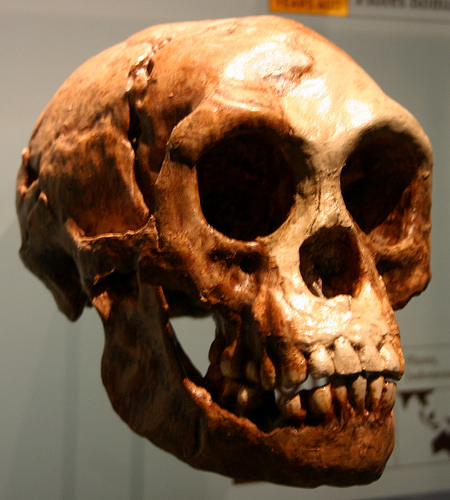
A study completed by scientists in France has concluded that, based on an examination of a key skull specimen attributed to Homo floresiensis, the cranial features do not support its attribution to the modern human species, Homo sapiens.
Antoine Balzeau of the Muséum National d’Histoire Naturelle, along with co-author Philippe Charlier of UVSQ/Paris-Descartes University, performed a medical study of skull Liang Bua 1 (LB1), considered to be the holotype find of Homo floresiensis, by conducting micro-CT examination of the cranial vault thickness and cranial structure arrangements of the skull. What they found was that the skull did not bear such traits common to modern humans, but featured traits more characteristic of ancient hominins such as Homo erectus, an extinct species of human thought to be the first human species to spread globally out of Africa.
Homo floresiensis, otherwise popularly known as “hobbit” due to its diminutive build and characteristic feet and thought by many to be a possible extinct species of human, became a media sensation in 2003 after its discovery on the Indonesian island of Flores by a joint Australian-Indonesian team of archaeologists looking for evidence of the original human migration of Homo sapiens from Asia to Australia. Still steeped in controversy and scholarly debate, the remains consist of the partial skeletons of nine individuals, including one complete skull, referred to as LB1. An individual “hobbit” would have stood only about 3.5 feet (1.1 m) in height, with a small brain, more akin to that of an ancient hominin. Most tantalizing was the finding that the remains dated to relatively recent times (possibly as recently as 12,000 years ago). Recovered alongside the skeletal remains were stone tools ranging from 94,000 to 13,000 years ago.
_______________________________________
Cave where the remains of Homo floresiensis were discovered in 2003, Lian Bua, Flores, Indonesia. Rosino, Wikimedia Commons
________________________________________________________
Cast of LB1 skull. Ryan Somma, Wikimedia Commons
_____________________________________________
Some scientists have suggested upon examination that the “hobbit” represented a modern human group that suffered from microcephaly and disease, resulting in the physical characteristics featured in the recovered fossil remains. Other studies, however, have not supported this hypothesis, and this latest publication advances additional findings supporting the suggestion that the fossils do not exhibit pathological features and are indeed those of an extinct human species.
The study* is published ‘in press’ in the Journal of Human Evolution.
_____________________________________________
*Antoine Balzeau and Phillipe Charlier, What do cranial bones of LB1 tell us about Homo floresiensis? Journal of Human Evolution, Vol. 93, April 2016, pp. 12-24.
____________________________________________________________
______________________________________________
Travel and learn with Far Horizons.
____________________________________________
This richly illustrated issue includes the following stories: Two remarkable discoveries that are shedding light on human beginnings in Africa; a traveling exhibit and an archaeological site that show how knowledge is more valuable than gold; a Spanish cave and a unique burial that are offering a tantalizing glimpse on the lives of Ice Age hunter-gatherers in Europe; the stunning visual reconstruction of an ancient Roman town; enlightening new finds at a remarkably well-preserved site of ancient Hellenistic-Roman culture overlooking the Sea of Galilee; rare finds that are shedding light on occult practices among ancient Greeks in Sicily; and an overview of the overwhelmingly rich archaeological heritage of Britain. Find it on Amazon.com.











